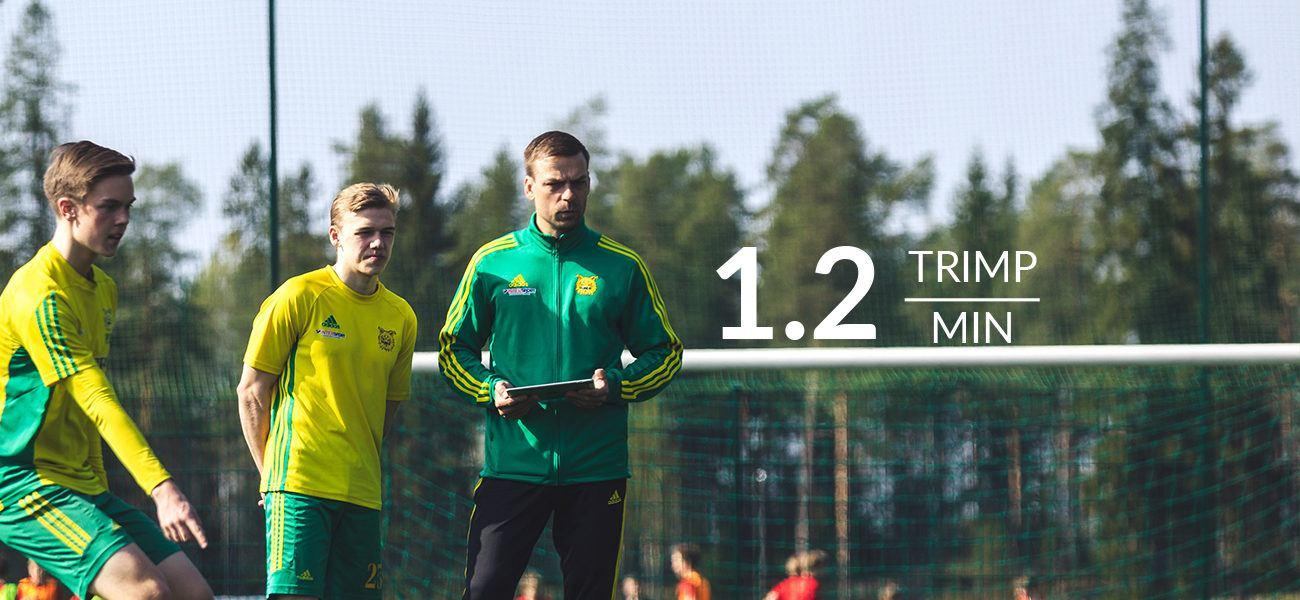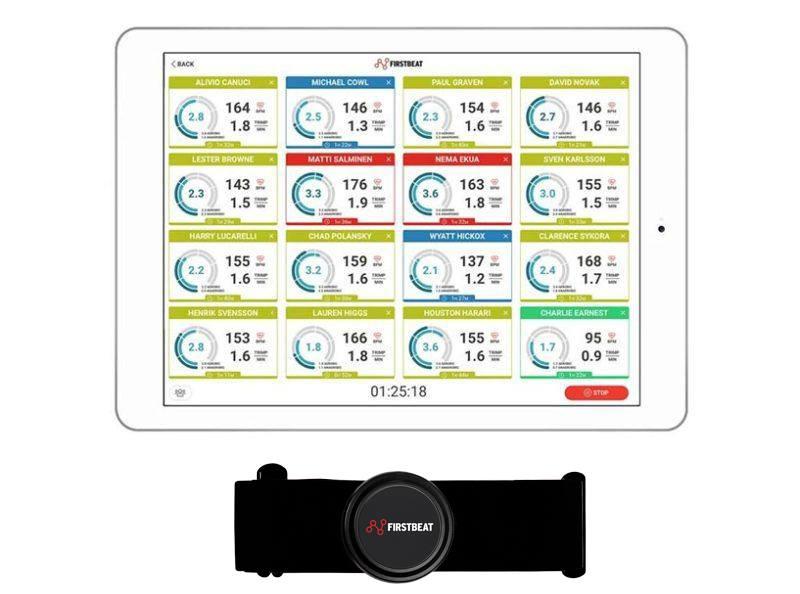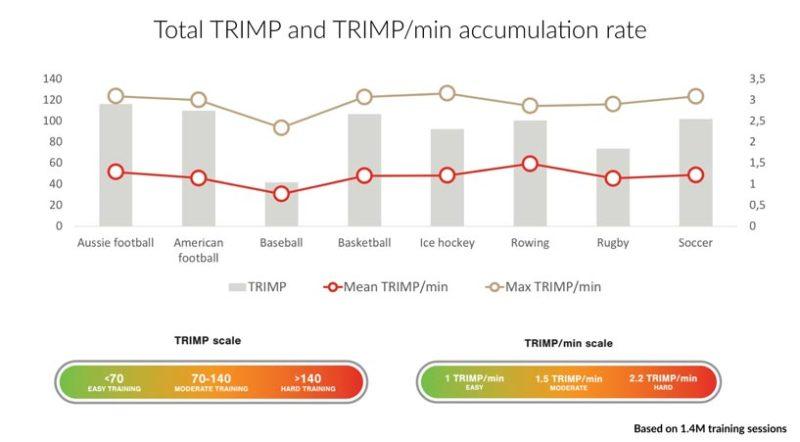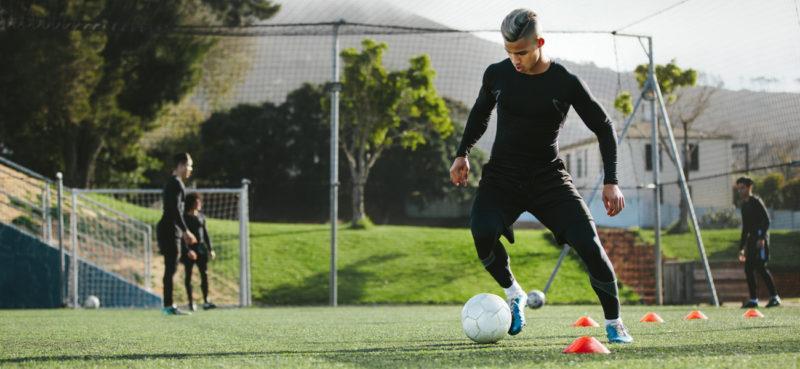
The introduction of Firstbeat Sports app and Sensor to the Firstbeat Sports player monitoring solution has made new real-time metrics available to coaches and performance staff for the first time, including TRIMP/min.
Here, we look at how TRIMP/min differs to TRIMP, and how to utilize this new real-time metric during practice to enhance training load management.
Want to know more about internal training load in pro sports coaching? Download our guide here
What is TRIMP?
TRIMP stands for Training Impulse. TRIMP considers the intensity (calculated by the heart rate reserve method) and the duration of exercise (measured in minutes). It is a way to quantify training load and stress placed on an athlete/player and is represented by a single number.
What is TRIMP/min?
TRIMP/min shows the rate at which training load (measured as TRIMP) is accumulated over a period of time. This indicates the load density of a session, activity, or game. As a result, you can see the internal load placed on an athlete and compare sessions of different lengths, as well as compare shorter, high-intensity sessions with game data that may last several hours.
Here’s an example scenario. A session may result in an overall 108 TRIMP score for a player. This would typically be categorized as a ‘Moderate’ session.
However, because this session was just 45-minutes long, the TRIMP/min score is 2.3. This shows the session was actually very hard – and matches the intensity of a game – as the density of the workout was high even if the minutes were not.
What is Real-Time TRIMP/min?
The real-time TRIMP/min metric shows a sliding window of the previous 60 seconds’ TRIMP accumulation. This means you can see each player’s current load situation and their response to session intensity at any given point. In effect, real-time TRIMP/min shows the ‘pace’ of an ongoing section of practice.
This Firstbeat Sports Sensor’s in-built memory calculates TRIMP/min, and this is easily accessible to coaches on the Firstbeat Sports app when within range of the Sensors.

What are the Benefits of Viewing TRIMP/min in Real Time?
TRIMP/min is already available to Firstbeat Sports users via the Dashboard and Data Export during post analysis. Firstbeat Sports app and Sensor now make it possible to track TRIMP/min in real time.
This means coaches can quickly and easily see if a session – or particular section of the session – is having the expected physiological impact on an individual player or team as a whole. Accessing this data has wide-ranging uses, such as:
Train as you play:
Real-time TRIMP/min data lets you know if you are replicating, failing to replicate, or exceeding game intensity during a specific drill or high-intensity session. Replicating or exceeding the intensity of a game within training improves a player’s physiological ability to handle an increased load on game day.
“When we want to reproduce the intensity and specificity of the game for a certain time during a specific drill, TRIMP/min becomes the appropriate tool for this purpose,” explains Prof. Belmar Ramos Junior, a long-time Firstbeat Sports user within elite soccer and basketball in Brazil.
“Viewing TRIMP/min in real time makes it possible to make adjustments between the programmed load and the load that is actually happening in practice. With TRIMP/min, we report the relative load and not the absolute load. This is important when we want a drill to have the same intensity of a game but not the density of a game.”
Recovery and rehab sessions:
The aim of recovery sessions and drills are to limit load intensity in order to allow the body to recover. Tracking real-time TRIMP/min lets you see if the drill or session designed to do this is achieving its aim. This also applies for injury rehab where different sessions during the rehab process aim to see players reach and progress through certain intensity thresholds.
What are the Typical TRIMP and TRIMP/min Values you see in Different Sports?

This table shows TRIMP and TRIMP/min data across various sports. The left axis represents TRIMP. The right axis represents TRIMP/min.
Contact us for more information about Firstbeat Sports app and Sensor – the only place to see real-time TRIMP/min, and Aerobic and Anaerobic Training Effect.
You might also be interested in

Why Monitor Internal Load in Elite Sports?
A look at the what, how and why of internal load monitoring and why it should form part of your training program.

The Role of the Modern S&C Coach – With Kevin Cronin, Colorado S&C Ep. 1
In this podcast, the Head Strength & Conditioning Coach of Colorado College shares his thoughts on using Firstbeat Sports on a day-to-day basis.

